Anchor Bolt Fixation - Essential Guidelines for Secure and Effective Fastening
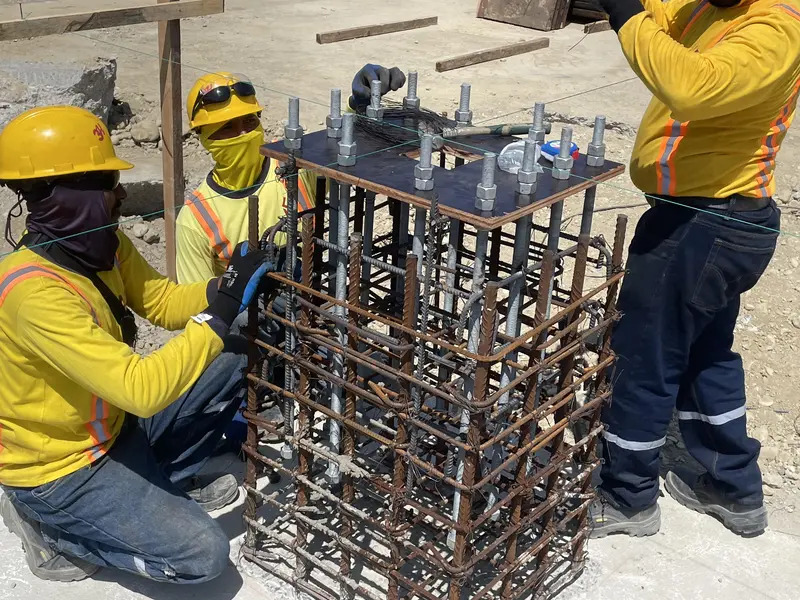
Anchor bolts play an integral role in construction projects, especially in steel structure, providing a secure and reliable way to attach structural members to concrete substrates. Whether in high-rise buildings, bridges, industrial structures, or residential buildings, ensuring proper anchor bolt fixation is vital for long-term structural integrity. Improper installation or selection can lead to structural failure, safety hazards, and costly repairs.
To achieve an effective and safe anchor bolt fixation, it is essential to consider a number of key factors that can impact the performance of the bolts and their ability to withstand applied loads. This article highlights the key considerations such as edge distance, bolt spacing, concrete conditions, tightening torque, installation techniques, and best practices to ensure optimal performance of anchor bolts.
Concrete Edge Distance
The distance between the edge of the concrete and the anchor bolt is one of the most critical factors that significantly affects the strength and effectiveness of the fixation. The concrete breakout strength of anchor is directly depends on the edge distance. If the bolt is placed too close to the edge, the surrounding concrete may crack or break away under load, reducing the anchor’s load-bearing capacity.
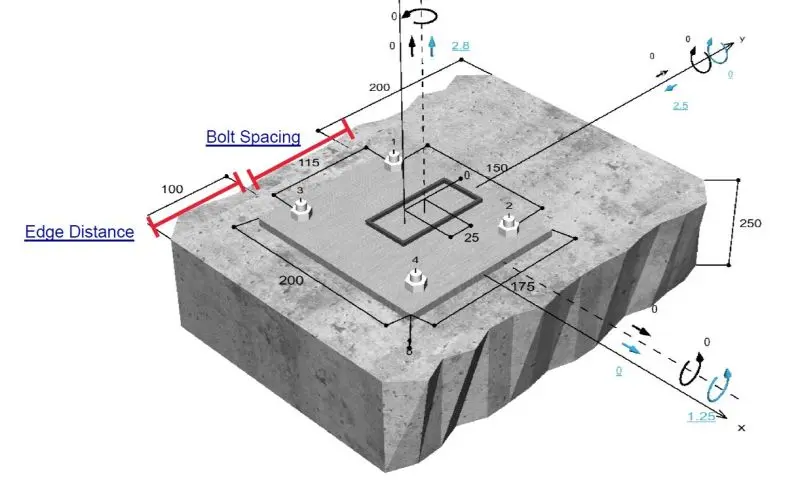
Key Considerations:
- The further the bolt is from the edge of the concrete, the stronger and more reliable the fixation will be.
- The edge distance should be determined based on the type of anchor bolt, concrete strength, and load requirements.
- Standard edge distance recommendations should always be followed as per the manufacturer’s guidelines and the national design codes.
Best Practices:
- Maintain a minimum edge distance to avoid stress concentration and potential concrete breakout.
- If the anchor must be installed near the edge, consider reinforcement techniques such as providing anchor reinforcement.
- In cases where edge distance cannot be increased, alternative fastening methods, such as through-bolts or adhesive anchors, should be explored.
Anchor Bolt Spacing
The spacing between anchor bolts is another crucial factor influencing the effectiveness of the fastening system. If bolts are placed too close together, stress interference can occur, weakening the concrete and reducing the overall load capacity.
Key Considerations:
- The spacing between bolts should be determined based on the applied loads and the strength of the concrete substrate.
- Adequate spacing prevents stress overlap and ensures a balanced distribution of loads.
- Spacing requirements may vary based on the type of anchor, fixture size, and the nature of the applied forces (tension, shear, or combined loading).
Best Practices:
- Maintain uniform spacing between anchor bolts as recommended by design engineer, manufacturers and design code.
- When working with heavy-duty applications, ensure additional reinforcement in the form of rebar or supplementary support structures.
Concrete Condition
The condition of the concrete substrate plays a significant role in the effectiveness of anchor bolt fixation. Non-cracked concrete provides better holding strength, while cracked concrete can lead to reduced anchoring capacity and potential failure.
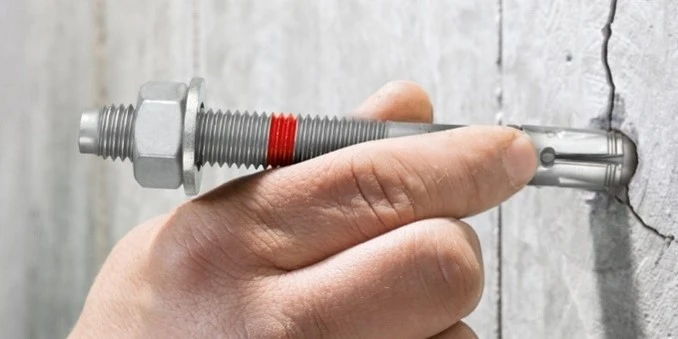
Key Considerations:
- Non-cracked concrete is the ideal substrate for anchor bolts, offering superior strength and stability.
- In cracked concrete conditions, expansion anchors may not perform optimally, requiring the use of specially designed cracked-concrete anchors.
- Concrete may crack over time due to environmental conditions, load variations, or settlement, making it necessary to account for long-term performance.
Best Practices:
- Always consider concrete as cracked during anchor design. It's always best to be on the safe side.
- Use anchors specifically designed for cracked concrete when working in high-stress environments or seismic zones.
- Conduct regular inspections of anchor fixations in aging structures to detect early signs of cracking and take necessary remedial measures.
- Consider using adhesive anchors, which are often better suited for cracked concrete compared to traditional mechanical anchors.
Tightening Torque
Applying the correct tightening torque is important for ensuring the anchor bolts achieve the necessary clamping force without being overstressed. Over-tightening can lead to excessive stress in the bolt, causing it to yield or fracture, while under-tightening may result in inadequate load transfer, leading to loosening and failure.
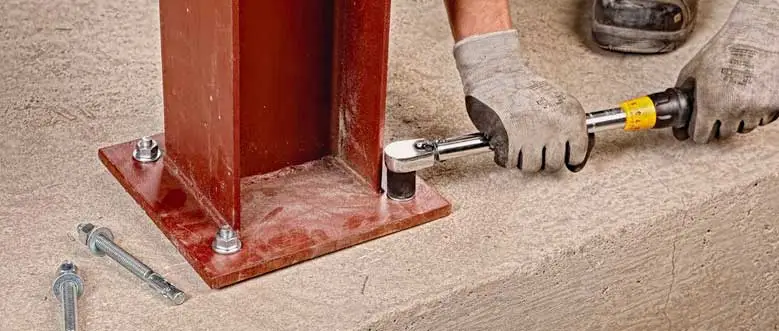
Key Considerations:
- Each anchor type has a specific torque requirement determined by design engineer or provided by the manufacturer.
- Improper torque application can result in long-term reliability issues, leading to premature failure.
- The correct torque ensures the bolt is secured without damaging the surrounding concrete or the anchor itself.
Best Practices:
- Always use a calibrated torque wrench to apply the correct amount of force.
- Follow manufacturer torque guidelines to prevent overloading or under-tightening.
- Perform periodic torque inspections in high-vibration environments where anchor bolts may loosen over time.
Installation Techniques
The method used for anchor bolt installation has a direct impact on its performance and durability. Poor installation can compromise the structural integrity of the anchor bolt, leading to failures under load.
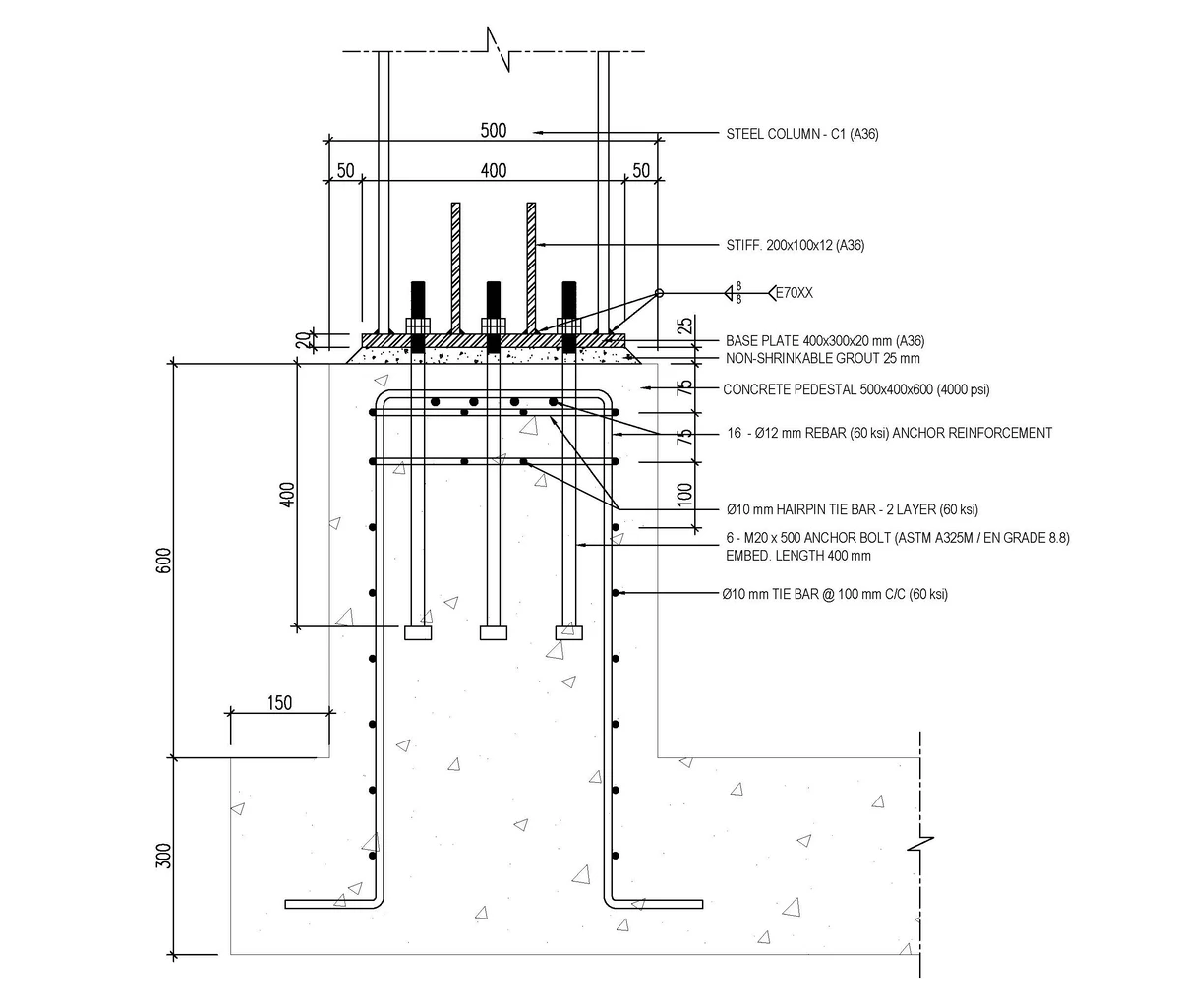
Key Considerations:
- Different anchor types require specific installation methods, including cast-in-place, expansion, adhesive, and undercut anchors.
- The quality of drilling, cleaning, and setting procedures directly affects the strength of the anchor fixation.
- Using the correct tools and techniques ensures uniform and reliable installation.
- Apply proper grouting where necessary.
Best Practices:
- Use high-quality drilling equipment to create precise and clean holes.
- Ensure proper hole depth and diameter as per the manufacturer’s specifications.
- Remove dust and debris from drilled holes before inserting anchors to improve adhesion and grip.
- Allow sufficient curing time for adhesive anchors to reach full strength before applying loads.
Common Failure Mechanisms
Anchor bolt failures can occur due to several reasons, including poor installation, incorrect bolt selection, or excessive loads. Understanding these failure modes can help prevent structural failures and ensure long-term performance.
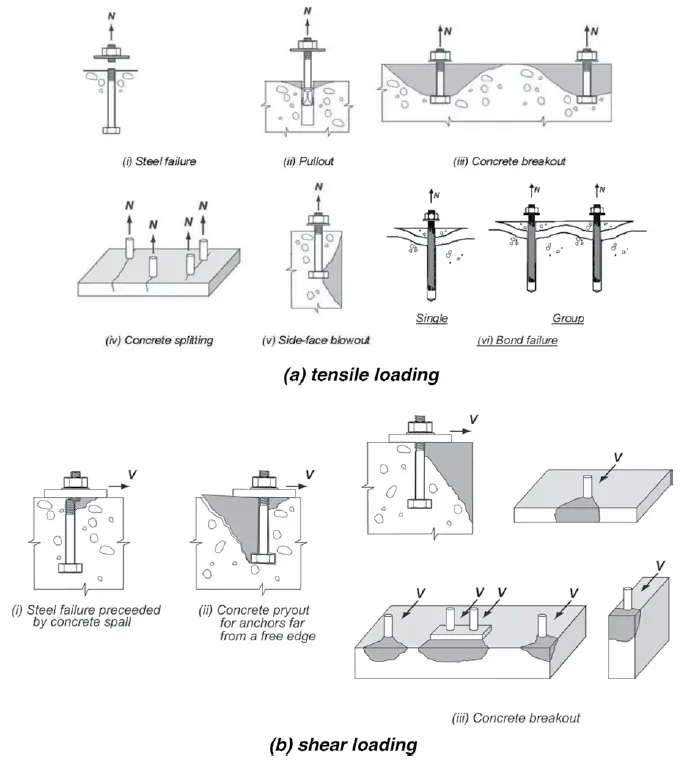
Types of Failures:
- Concrete Breakout: Inadequate edge distance and excessive stress around the anchor causes the surrounding concrete to crack and fail.
- Pullout Failure: The anchor is pulled out of the concrete due to insufficient embedment depth or inadequate adhesion.
- Steel Failure: The anchor bolt itself fractures due to overloading or material fatigue.
Preventive Measures:
- Follow recommended installation procedures and guidelines to minimize risks.
- Ensure adequate embedment depth and use proper anchor materials for the application.
- Conduct load testing and periodic inspections to detect potential weaknesses before failure occurs.